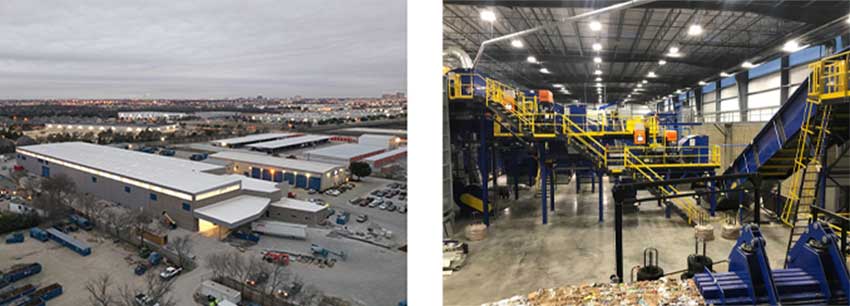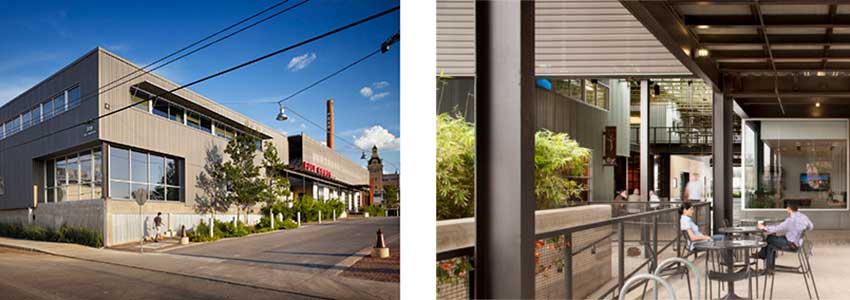Advanced Sustainability Potential Using Metal Building Systems
Building Life-Cycle Impact Reduction
LEED recognizes the value of extending the life of buildings and minimizing material impacts with up to 5 credits available. Constructing an addition onto an existing metal building or dismantling and reusing parts of the building helps achieve the Building and Material Reuse option. For new construction, the Whole Building Life-Cycle Assessment (LCA) option is ideal for metal buildings when using Whole Building LCA software like the Athena Impact Estimator software. MBMA contributed industry-wide life-cycle data with metal building specific capabilities to help design professionals achieve this credit.
The embodied carbon content of building materials has received a lot of appropriate attention recently. That’s because the majority of construction-related CO2 emissions —about 11 percent of the global total—are associated with manufacturing building materials, transporting materials to construction sites, and the actual construction process, according to a U.N. Environment Global Status report. In that light, the most obvious perceived environmental attribute of metal buildings comes from its primary material—steel. According to the American Iron and Steel Institute (AISI) and the Canadian Sheet Steel Building Institute (CSSBI), steel is the most recycled material in North America. By specifying recycled steel, which is often processed in an electric arc furnace, the emissions and embodied carbon content of the steel is greatly reduced.
To understand the relative significance of using recycled steel metal buildings, a life- cycle assessment comparison of buildings with different structural and envelope materials was produced independently by the engineering firm of Walter P. Moore & Associates. The resulting report concluded that “Metal buildings showed lower environmental impacts in all six metrics when comparing structural and envelope materials to load bearing masonry walls, concrete tilt-up, and steel framed construction of the same building footprint and functional equivalence.” Further, with all metal building components typically delivered simultaneously from the manufacturing plant to the construction site, emissions related to material delivery are vastly reduced over other forms of construction.
Building Product Disclosure and Optimization—Environmental Product Declarations (EPDs)
Environmental Product Declarations (EPDs) are widely recognized as the best way to communicate the environmental impacts of building products. LEED recognizes and encourages their use, with up to 2 credits available in this category. In support of the creation of these documents, the MBMA funds extensive research related to the environmental impacts of metal building systems. Through collaboration with the Athena Sustainable Materials Institute and UL Environment, MBMA developed an industry-wide LCA report and three industry-wide environmental product declarations (EPDs) for designers to use when specifying MBMA-member products. These are available to architects and others for download at mbma.com.
MBMA also recently released revised environmental product declarations (EPDs) for three specific metal building product categories: primary rigid framing, secondary framing, and metal cladding for roofs and walls. These provide architects, specifiers, designers, and other industry professionals with transparent, third-party documentation of the environmental impacts of products used in metal building systems. MBMA partnered with UL Environment to develop and certify these EPDs which summarize the cradle-to-gate environmental impacts of a metal building system. The EPDs are based on Product Category Rules (PCRs) used to develop a life-cycle analysis (LCA) final report, which is summarized in the EPDs. Significant improvements were noted in the most recent EPDs over the previous ones developed using the same process. For example, the use of recycled steel has improved by 20 percent and the scrap produced has dropped 15 percent. The MBMA industry-wide LCA Final Report and the three MBMA industry-wide EPDs conform to ISO 14044 and ISO 21930, with the cradle-to-gate scope to help earn credits.
Building Product Disclosure and Optimization—Sourcing of Raw Materials
The sourcing of raw materials is a significant concern with up to 2 credits available in LEED to address this. Toward that end, metal building manufacturers' lists may provide the information to meet the Raw Material Source and Extraction Reporting option. The Leadership Extraction Practices option includes the list of traditional single-source attributes, such as recycled content, materials reuse, etc. The recycled content is a strong point for metal building construction. Steel is the only material with the approved default recycled content of 25 percent. Many steel producers and metal building manufacturers publish their true recycled content to increase the percentage for calculation purposes.
Some related points here, include the following:
- Metal buildings are generally manufactured from at least 65% recycled steel, substantially reducing the need for virgin materials excavated from the earth. Then, at the end of a building’s life, the raw steel can be 100% recycled to be used in various products, such as cars, appliances, buildings, and bridges.
- Steel’s recyclability exceeds other comparable construction materials and its contribution to a circular economy is increasing. Steel products are becoming more lightweight and designed for diverse applications and extended useful life. In particular, metal buildings are more lightweight (use less material) than other forms of steel construction and as a result have less embodied carbon than many competing forms of construction.
- New steel, made with recycled material, uses as little as 26% of the amount of energy required to manufacture steel from iron and other naturally extracted materials.
- Steel can be continually recycled into new steel products without any deterioration in product quality.
- Net-zero carbon steel, manufactured in the US, provides emissions-free steel products to help architects meet their sustainability goals. It is also important to note that, today, the United States is the cleanest place in the world to make steel, accounting for less than 2 percent of the GHG emissions from the global steel industry. The AISI points out that steel source energy is increasingly from electricity, with more of that electricity coming from renewables than previously.












